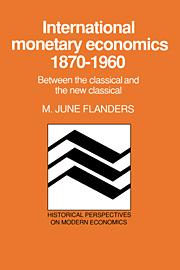Summary
His place on the stage
Ohlin considered himself a late classical (he called the group the Harvard School), and I find this broadly acceptable, with many qualifications. One of his salient characteristics is, in fact, that he is difficult to classify. In a sense he has gotten a bad press, being widely regarded simply as a keynesian manqué, with a naive, pseudo-income approach to the balance of payments. I try to avoid psychological analyses, but I suggest that this characterization of Ohlin stems primarily from a tendency to read his controversy with Keynes over German reparations (Ohlin 1929), fit it into the matrix of pre-keynesian Stockholm economics, and let it go at that. The one-third of Interregional and international trade (Ohlin 1933a; less in the 1967 revision) devoted to the monetary as distinct from the real theory of international trade seems to be widely neglected. It is on this, primarily, that I base my discussion.
A word about dates, to put the work into its historical perspective. Interregional and international trade bears a 1933 copyright, but the preface is signed January 20, 1931. Ohlin's doctoral dissertation at Stockholm (entitled Handelns Teori) was presented and published in May 1924. Ohlin spent the year 1923 at Harvard and the preface acknowledges the comments and interest of Taussig, Williams, and Viner, and judging from an outline, contains the basic ideas embodied in the later English-language work.
- Type
- Chapter
- Information
- International Monetary Economics, 1870–1960Between the Classical and the New Classical, pp. 245 - 258Publisher: Cambridge University PressPrint publication year: 1990

